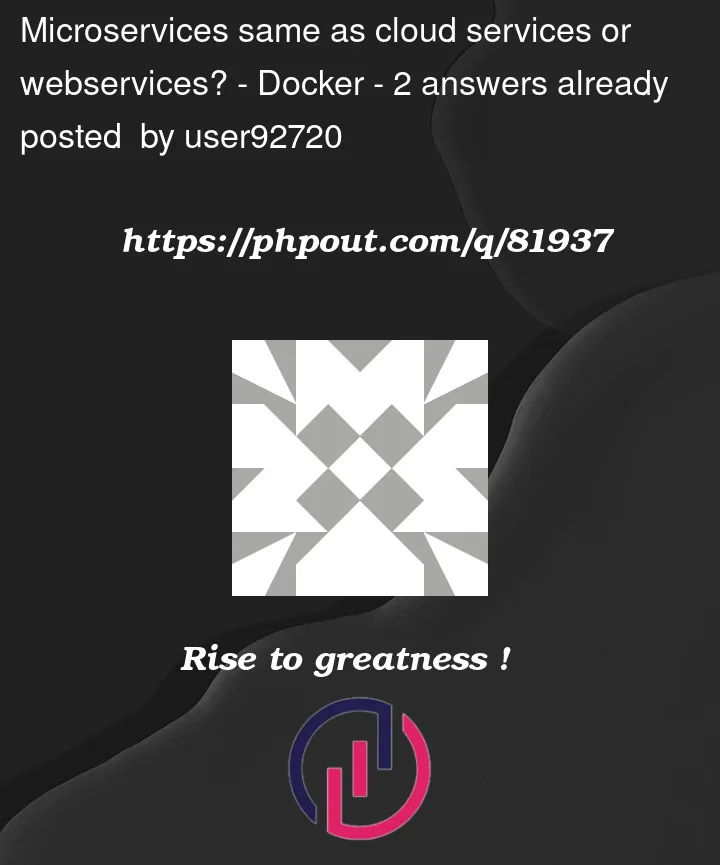Firstly, I apologize for the rather basic question. I am just beginning to learn about Microservices Architecture and would like to get my basics right.
I was wondering if topics such as AWS cloud services/web services imply the Microservices architecture. For instance, if someone is working on an AWS project does that mean that he is using a microservice architecture? I do understand AWS, Docker etc is more of a platform. Are they exclusively for Microservices?
I would really appreciate a short clarification




2
Answers
No, using a cloud provider does not imply using a microservice architecture.
AWS can be (and is often) used to spin up a monolithic service, e.g. just a single EC2 server which uses a single RDS database.
Utilizing Docker and a container orchestrator like ECS or EKS, also does not mean on its own that one has a microservice architecture. If you split your backend and frontend into two Docker containers that get run on ECS, that’s really not a microservice architecture. Even if you’d horizontally scale them, so you’d have multiple identical containers running for both the backend and frontend service, they still wouldn’t be thought of as microservices.
Microservices, cloud infrastructure like Amazon Web Services, and container infrastructure like Docker are three separate things; you can use any of these independently of the others.
"Microservices" refers to a style of building a large application out of independently-deployable parts that communicate over the network. A well-designed microservice architecture shouldn’t depend on sharing files between components, and could reasonably run distributed across several systems. Individual services could run on bare-metal hosts and outside containers. This is often in contrast to a "monolithic" application, a single large deployable where all parts have to be deployed together, but where components can communicate with ordinary function calls.
Docker provides a way of packaging and running applications that are isolated from their host system. If you have an application that depends on a specific version of Python with specific C library dependencies, those can be bundled into a Docker image, and you can just run it without needing to separately install them on the host.
Public-cloud services like AWS fundamentally let you rent someone else’s computer by the hour. An AWS Elastic Compute Cloud (EC2) instance literally is just a computer that you can ssh into and run things. AWS, like most other public-cloud providers offers a couple of tiers of services on top of this; a cloud-specific networking and security layer, various pre-packaged open-source tools as services (you can rent a MySQL or PostgreSQL database by the hour using AWS RDS, for example), and then various proprietary cloud-specific offerings (Amazon’s DynamoDB database, analytics and machine-learning services). This usually gives you "somewhere to run it" more than any particular design features, unless you’re opting to use a cloud’s proprietary offerings.
Now, these things can go together neatly:
Again, all of these steps are basically independent of each other. You could deploy a monolithic application in containers; you could deploy microservices directly on cloud compute instances; you could run containers in an on-premises environment or directly on cloud instances, instead of using a container orchestrator.